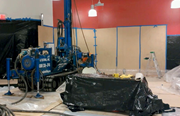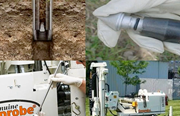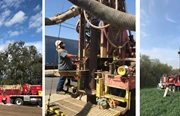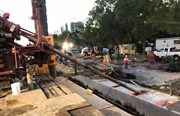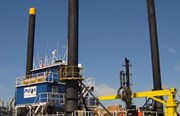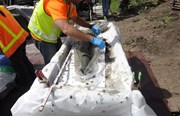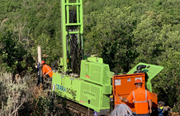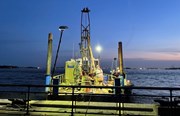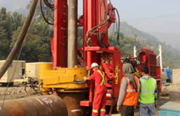Curious what others in the drilling industry learned this year? We were, too, which is why we collected the top 10 most-read blog posts in 2019 about drilling. Check out what your peers have been reading—and make sure you’re not missing out.
3 Factors to Consider in Choosing a Drilling Technology
Although this post is more than two years old, it continues to be a popular read because some things don’t change—like the questions you should ask before choosing a drilling technology. In this blog post, you’ll learn the three fundamental questions you should be able to answer to confirm you understand a drilling technology and decide if it will suit your project site.
A Few Questions From Our Drilling 101 Webinar
If you’re just getting started in the environmental services industry, do yourself a favor and watch the entire Drilling 101 webinar recording. If you don’t have an hour to spend, then read this post—it dives into some of the questions we received from webinar participants about different drilling methods and technologies.
Drilling 102: Introduction to Environmental and Geotechnical Drilling Methods
Anyone launching a career in environmental services or the drilling industry needs to have at least a basic understanding of the various types of environmental and geotechnical drilling. This blog post lists them, defines how they work, and provides the pros and cons of each.
Drilling 103: An Introduction to Air Rotary Casing Hammer (ARCH) Drilling
Air rotary casing hammer (ARCH) drilling is an often-overlooked option that can be effective for drilling in alluvial formations. In this blog post, industry veteran Bryan L. Nydoske explains how ARCH drilling works, when ARCH should be used, and the pros and cons of the method.
Sampling 102: 4 Ways to Collect Deep Groundwater Samples
Selecting the right groundwater sampling method depends on a lot of variables, such as the geology, suspected contaminant, quantity of sample needed, and budget. This blog post covers four popular groundwater sampling methods that are used with casing advanced drilling systems (examples: hollow auger stem, sonic, ARCH, ODEX), and highlights the advantages and drawbacks of each.
If you have the time, you may also want to watch the webinar, Sampling 101: Methods of Collecting Environmental Samples During Drilling.
Difficult Drilling: The Difference Between Restricted Access and Limited Access
Despite common usage, there actually are differences between “restricted access” and “limited access” sites, and this post explains them as well as the different kinds of rigs that can be used for both. Author Bill Poupis also gives some real-life examples to help illustrate the scenarios in which a specialized rig may be the best option.
Limited Access Shouldn’t Limit Your Options
Limited access sites have unique considerations, such as site obstacles that limit drill rig options and specific safety concerns. However, that doesn’t mean you can’t have a successful project—but it requires extra planning and a solid understanding of site challenges. This blog post will help you develop questions and a plan for avoiding common pitfalls.
New Depths for Groundwater Profiling
If you want to learn about the tools available for groundwater profiling, this blog post is for you. It covers the most commonly used tools that are powered by sonic technology—such as the WaterlooAPS, screen point 16 and 22 tools, and the push-ahead groundwater profiler.
5 Best Practices for Working With a Drilling Contractor
You and your drilling contractor have similar goals—mainly, a well-managed, safe and on-time project completed at or under budget. Competing goals are rarely an issue when working with contractors, but clear communication can me. In this post, a long-time project manager for Cascade outlines best practices that can help ensure your project goes smoothly.
How Sonic is Pushing the Envelope on Infrastructure Projects
Every infrastructure project is different—which means that the technology and equipment requirements are, too. Luckily, the sonic drilling platform can work as a Swiss Army knife solution for everything from tieback installations to landfill leachate collection drain installation. In this blog post, Jim McCombs shares key challenges for several types of infrastructure projects and explains how sonic can address them.
As you look ahead and plan for 2020 drilling projects, don’t forget everything 2019 taught you—whether it was through experience or a blog post. If you have questions a blog post can’t answer, get in touch so we can help.





